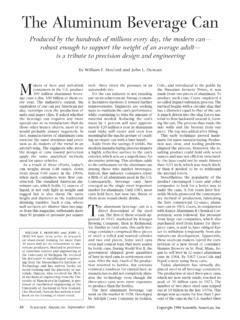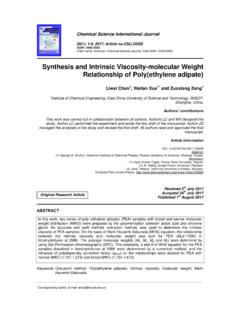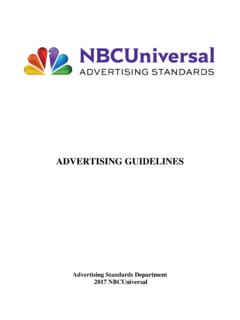Transcription of When It Comes to Pay, Do the Thin Win? The Effect of ...
1 APA PROOFSWhen It Comes to Pay, Do the Thin Win? The Effect of weight on Payfor Men and WomenTimothy A. JudgeUniversity of FloridaDaniel M. CableLondon Business SchoolCultivation theory suggests that society holds very different body standards for men versus women, andresearch indicates that the consequences of defying these social norms may not be linear. To test thesenotions in the employment context, we examined the relationship between weight and income andthe degree to which the relationship varies by gender.
2 For women, we theorized a negative weight income relationship that is steepest at the thin end of the distribution. For men, we predicted a positiveweight income relationship until obesity, where it becomes negative. To test these hypotheses, weutilized 2 longitudinal studies, 1 German and 1 American. In Study 1, weight was measured over 2 timeperiods, and earnings were averaged over the subsequent 5 years. Study 2 was a multilevel study in whichweight and earnings were within-individual variables observed over time, and gender was a between-individual variable.
3 Results from the 2 studies generally support the hypotheses, even when examiningwithin-individual changes in weight over : weight , gender, sex, earnings, payNemo liber est qui corpori servit(No one is free who is a slave to hisbody). Lucius Annaeus SenecaThe ideal image of a woman is almost impossible for anybody toachieve. Peter J. Brown (anthropologist at Emory University)The standard of attractiveness portrayed on television and inmagazines is slimmer for women than for men (Silverstein, Per-due, Peterson, & Kelly, 1986), slimmer than in the past (Silversteinet al.)
4 , 1986), thinner than the actual female population ( , Fouts& Burggraf, 1999), and often thinner than the criteria for anorexia(Wiseman, Gray, Moismann, & Ahrens, 1992). In the fashionindustry, models have become so frail and emaciated that showshave started banning models below certain weight ratios ( ,Cable News Network [CNN], 2008; Wilson, 2006). On the basis ofthese pervasive social norms surrounding weight , it is perhaps nosurprise that some women have internalized these values: About90% of cases of anorexia and bulimia are women (Fouts &Burggraf, 1999).
5 What may be more surprising is the degree to which employersalso seem to have internalized the notion that employees weightmatters. Roehling s (1999) comprehensive review suggests thatobese individuals are rated as being less desirable as subordinates,coworkers, and bosses, and they are viewed as less conscientious-ness, less agreeable, less emotionally stable, and less extravertedthan their normal- weight counterparts. Even though these ste-reotypes are inaccurate (Roehling, Roehling, & Odland, 2008), itappears that in the United States, obese employees are viewed bytheir employers as lazy and lacking in self-discipline (Puhl &Brownell, 2003).
6 Roehling s (1999) review also revealed thatoverweight women are consistently judged more harshly in theworkplace than overweight men, and Griffin (2007) reported that60% of overweight women and 40% of overweight men describethemselves as having been discriminated against in the course of the most important employment outcomes that may beaffected by weight is income, because discrimination against obeseemployees at any stage of the employment cycle including hir-ing, training, or promotions should ultimately be reflected inemployees income.
7 In addition to affecting the type of life one canlive, income can be viewed as a culmination of employees socialand human capital investments (Becker, 1993), and it is a symbolof what society values. As such, income often influences people sidentities because it serves as mark of success relative to othersand also is an index of career success (Judge, Cable, Boudreau, &Bretz, 1995). Though economists have studied the wage penaltiesapplied to obesity (Baum & Ford, 2004; Cawley, 2004; Conley &Glauber, 2007), we are not aware of any study in the organiza-tional behavior literature that has examined the weight earningsrelationship or gender differences therein.
8 Beyond the obviousrelevance of the topic to organizational behavior, there are threeadditional limitations in past research that we address with thepresent , existing theory on the weight income relationship hasfocused on the effects of being obese but not being thin, andexisting empirical research has assumed a linear relationship be-tween weight and income. Past research has not examined whetherthe weight income relationship is actually nonlinear because ofTimothy A. Judge, Department of Management, Warrington College ofBusiness, University of Florida; Daniel M.
9 Cable, Department of Organi-sational Behaviour, London Business School, London, concerning this article should be addressed to TimothyA. Judge, Department of Management, Warrington College of Business,211D Stuzin Hall, Box 117165, Gainesville, FL 32611. of Applied Psychology 2010 American Psychological Association2010, Vol. , No. , 000 0000021-9010/10/$ DOI: S 1 8/20/10 11:32 Art: 2009-1127 APA PROOFS employers expecting and rewarding specific weight ideals. In fact,we could not locate any research that developed theory or empir-ically examined the differences between rewarding thin employeesversus penalizing obese employees or whether the mechanism isdifferent for women versus men.
10 Given the extreme emphasis thatAmerican society places on women being thin, the literature sfocus on obesity may be obscuring important theoretical distinc-tions and empirical trends. Thus, we develop theory regarding therewards and penalties that employers apply to men and women onthe basis of body weight , which we test using curvilinear , although existing weight income research has sug-gested that the labor market punishes obese people in terms ofincome, past research has not used a multilevel analysis of longi-tudinal data to explore within-person relationships between weightand income.
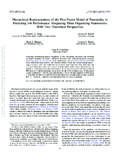

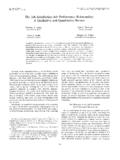

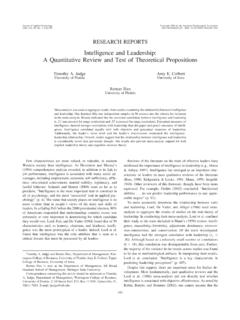
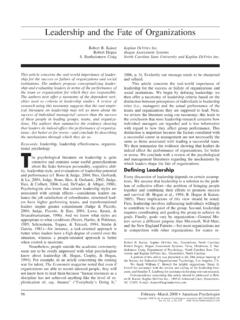
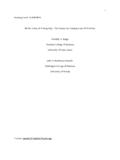

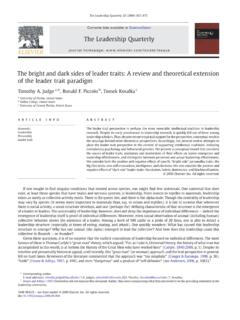

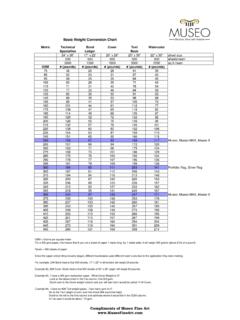


![ABSTRACT arXiv:1409.1556v6 [cs.CV] 10 Apr 2015](/cache/preview/4/e/0/e/4/4/2/c/thumb-4e0e442c20fc4f8e108fa20a1095af07.jpg)
